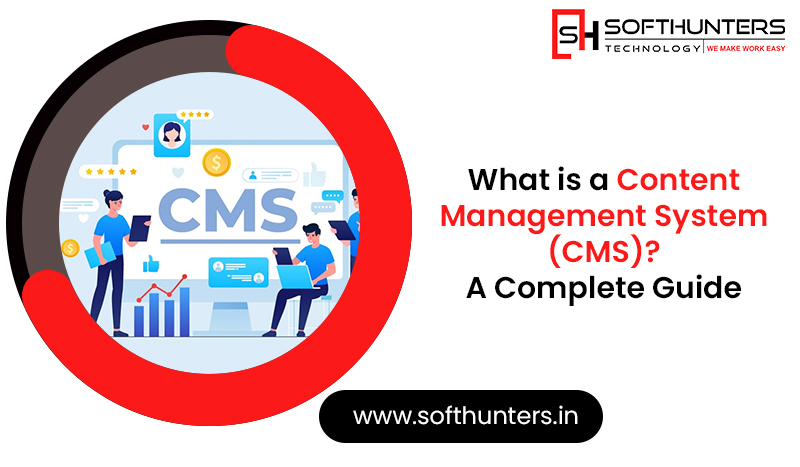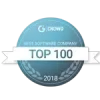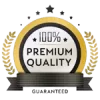Most bloggers need a management system or a toolkit to manage their content for writing and editing in the correct way to optimize its use. A content management system (CMS) is a better way to manage your content elements according to your preferences. Let us break down what a content management system is. Digital Marketing Company in Jaipur is here to provide complete assistance in digital marketing services.
What is a Content Management System (CMS)?
A CMS is software that manages multiple contributors for creating, editing, and publishing from one dashboard. In the management of CMS, the content is stored in the database and showcased through the layer of presentation, which generally depends on the set of templates.
A CMS will consolidate multiple work streams so that users can effectively collaborate on digital content creation from anywhere. Companies usually rely on a dynamic CMS to scale content creation successfully without making technical investments.
What are the features of a CMS?
Management of these tools is also becoming increasingly complex. Therefore, a CMS must possess features incorporating these tools or working continuously with social media marketing.
Some of the standard features of an effective CMS include:
- Content Creation: Users within the domain can easily create, edit, and format digital content.
- Digital Asset Management: All content is maintained in one place uniformly so that easy finding, use, and reusing of digital assets are possible.
- Collaboration: Flows are created for managing content and permissions based on roles such as authors, editors, proofreaders, contributors, and admins.
- Content Distribution – Content authors link their live site to the CMS for effortless scheduling and publishing to sites and social media channels.
- Optimization: Review of content performance to enhance online experience.
- Integration: users can usually integrate their must-have tools with the platform and centralize all their workflows
What are the advantages of a CMS?
With the emergence of SaaS CMS solutions, marketing teams and all other stakeholders within organizations can spend their energy optimizing customer experience without expending large quantities of technical debt. One of the significant advantages of a CMS is that it is collaborative. Multiple editors can add, schedule, or manage what will go live. Because it is most likely web-based, an infinite number of users can access a CMS from online marketing.
The other key advantage of a CMS is it enables people with little to no background in web development or web design to make the web page creation process much easier to handle.
The drag-and-drop editors of the typical content management site allow the content editor to input text and upload images without any knowledge of HTML, CSS implementation, or technical knowledge of building a website.
Example Platform for CMS
Although there are hundreds of types of CMS platforms that offer their unique functionality,
some of the best and most popular CMS providers include the following:
- WordPress
- Drupal
- Optimizely CMS
- Contentful
- Square space
- Wix
- Joomla
- Hubspot
Online stores are a particular case of CMS usage. Even though Optimizely Monetize, Adobe Magento, and Shopify manage content similarly to a classical CMS, many would classify those as e-commerce platforms with additional functionality rather than a classical CMS.
What to look for in a CMS
Of course, the best time to consider a content management system is before selecting it: Start thinking about how your users will interact with your digital content.
Technologies for Integrating the Support of CMS
If your company already uses a CRM or web analytics program like Google Analytics, consider a CMS that integrates with existing online marketing software. If you have developers in-house, having a solid API and documentation might also be necessary.
Most companies have multiple pieces of marketing software, so you might consider using a CMS plugin with:
- Mailchimp or Marketo if you are looking at capturing newsletter signups or lead capture
- A CRM for personalization and target content to subsets of visitors (audiences)
- Web analytics, such as Google Analytics, to track visitor behaviour and demographics
- APIs connecting applications or existing software that can ingest some CMS content
- E-commerce if you wish to sell products and services online
How to Manage, Create, and Edit Content.
Most modern CMSs have a drag-and-drop editor right out of the box, meaning you can drag and drop (hence the name) content onto a page and publish it with a preview of your page. Sometimes, however, your digital content may be more than pages to be published on a website. Evaluating how easy it would be to publish what you want to write and create is good.
Some features to look for, whether you are an editor novice or a power user:
- A WYSIWYG editor – What You See Is What You Get-style editors show you what content looks like while it is being edited. This dramatically improves the ease of use.
- Role and Rights Management – You control who gets to edit and publish each type of content.
- Automatic Updates and Upgrades – Cloud software is typically easier to update than installed in-house software.
- Pre-built Integrations and Modules – look at the integrations section for some examples of software you may already own.
- A Digital Asset Manager – or, for those who don’t speak DAM- stores your images and videos and does document management like a CMS for page-based but more tailored to digital assets.
Conclusion
Most open-source CMS’ have large developer communities. Still, because some systems are more targeted at those developers, it can be hard to parse all the information for less technical users. Digital Marketing Service in Jaipur is always here to help you with all digital marketing tasks.







